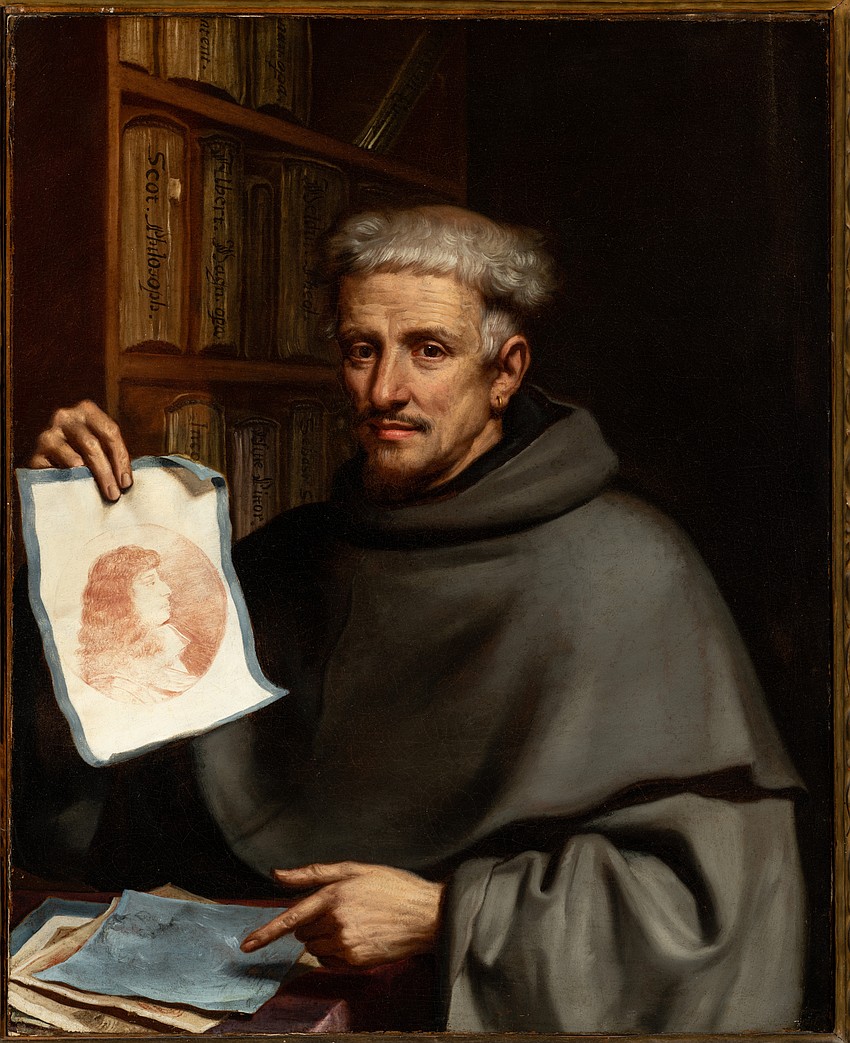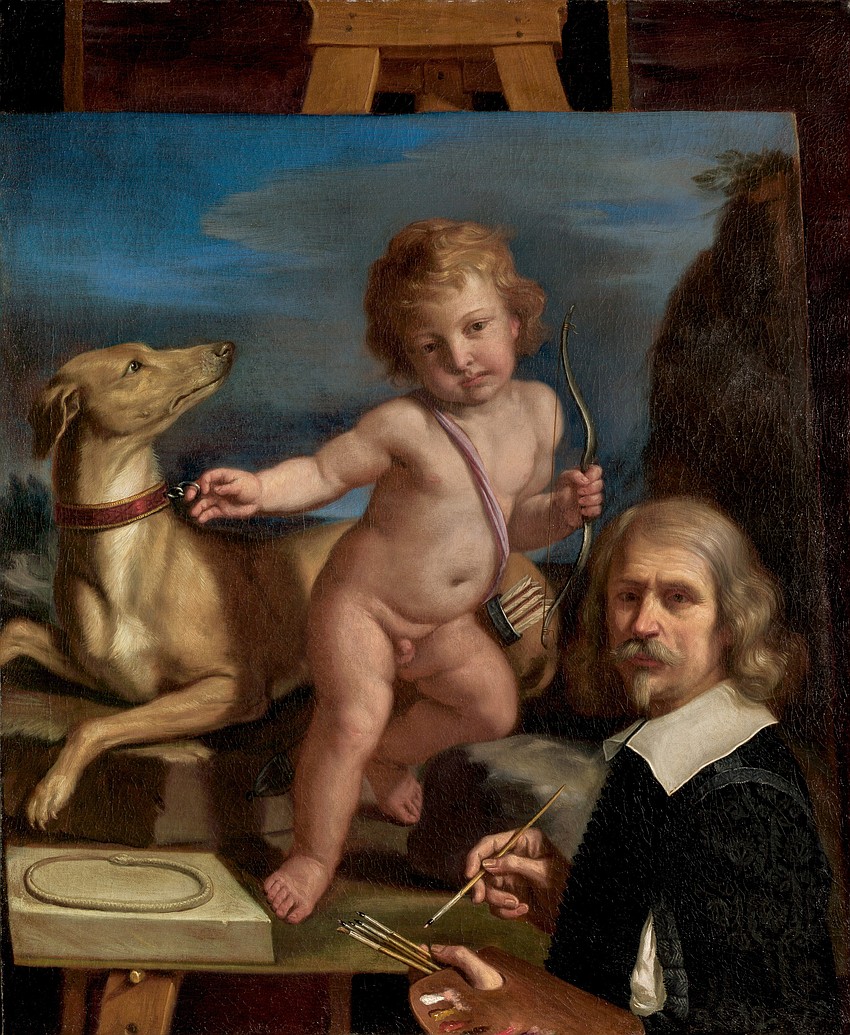- July 26, 2024
-
-
Loading

Loading
You've heard of the "Girl With a Pearl Earring," right? The famous 17th century portrait by Dutch painter Johannes Vermeer inspired a historical novel by Tracy Chevalier in 1999, later made into a film of the same name.
Now, The John & Mable Ringling Museum of Art wants you to meet a "Friar With a Gold Earring." That's the name of its ambitious exhibition about the Italian painter Giovanni Francesco Barbieri known as Guercino. His "Portrait of Fra Bonaventura Bisi" depicts the friar and is the centerpiece of The Ringling's show on 17 century Italian art.
How do you get the masses excited about art? Through marketing, of course, and with bells and whistles like immersive art experiences, as the runaway success of recent traveling shows for Monet and Van Gogh has demonstrated.
A film can boost a painter's reputation with popular audiences, as did David Bickerstaff's 2023 documentary about the ultimate Vermeer exhibition at the Rijksmuseum in Amsterdam.
Unfortunately, by the time "Vermeer: The Greatest Exhibition" screened earlier this year at Burns Court Cinema, calling Sarasotans' attention to the landmark exhibit with 28 of 37 known Vermeer paintings, it was too late to see the show. It ran from Feb. 10 through June 4.

That's why, despite all the holiday to and froing going on, it's time to make room in your schedule to see "Guercino's Friar With a Gold Earring" before it closes on Jan. 7. It's definitely worth the trip up Tamiami Trail.
When you tour a major art show such as the Manet/Degas exhibition at the Metropolitan Museum of Art in New York, which also closes Jan. 7, one can be so awed by the paintings that it's easy to overlook the hours of negotiations and picture wrangling it took to get all these canvases in one place.
Typically, a museum might have a major painting or two by an artist that it wants to build a show around. But after that decision is made, curators have to borrow works from other museums to get the critical mass necessary to mount an exhibition. Yes, there are probably some people who stop by the Louvre just to see the Mona Lisa and immediately leave, but a full-fledged exhibition helps bring folks through the door.
In The Ringling’s case, the focal point of “Guercino’s Friar With a Gold Earring” was acquired by the museum in 2015. Many of the paintings in the show are featured in an excellent companion book written by David Stone, professor emeritus at the University of Delaware with contributions by Sarah Cartwright, recently promoted to chief curator at The Ringling.
In his forward to the book "Guercino's Friar With a Gold Earring," Ringling Museum Executive Director Steven High recalls his excitement during the early-morning telephone bidding with Christie's London for "Portrait of Fra Bonaventura Bisi," when he was joined by former curator of collections Virginia Brilliant.
High notes The Ringling was "keen" to win the painting, dated 1658-59, because the museum already owned Guercino's "Annunciation." That painting was acquired, also from Christie's London, by circus magnate and museum founder John Ringling in 1929 in a deal that has been called one of the collection's "greatest bargains."
Because Ringling's art collection, palatial mansion and gardens were donated to the state of Florida upon his death, Guercino's "Annunciation" has been seen by thousands of visitors to Sarasota over the years.
After nabbing "Portrait of Fra Bonaventura Bisi," The Ringling decided to build an exhibition around the friar, who was a friend of Giovanni Francesco Barbieri, who got his name "Guercino" (the "squinter") because of his visual tic. The pandemic slowed down the process a bit, but the exhibition finally opened in October.
By working with other museums, libraries and private collectors, The Ringling put together a show exploring the Franciscan Minor Conventual friar who was an art dealer, printmaker, painter of miniatures and an influential member of 17th century Bologna's art community.
The son of a shoemaker, Bisi was born in town called Cento outside Bologna in 1601, not long after the city experienced an artistic revolution. The spearhead of this naturalist movement was Ludovici Carracci, who founded an Academy with his two younger cousins that bore his name. One of the students of the Carracci Academy was Lucio Massari, who became Bisi's teacher.
Because Bisi was a painter of miniatures, there are several in the show, which is accompanied by a related exhibition called "500 Years of Italian Drawings from The Princeton University Art Museum. " Both exhibitions are located in the museum's Arthur F. and Ulla. R. Searing Wing.
A show featuring Baroque Italian art wouldn't be complete without a Madonna suckling the infant Jesus or a nude cherub or two, and "Friar With a Gold Earring" is no exception.
One of my favorite paintings is Guercino's self-portrait before a painting of "Amor Fedele et Eterno," painted in 1655. It's on loan from the National Gallery of Art in Washington D.C.

If you only see one painting in the exhibition, make it the one that gave the exhibition its name. In Guercino's "Portrait of Fra Bonaventura Bisi," the friar with a gold earring is estimated to be about 60 years old. He's wearing a gray habit traditionally worn by members of his religious order.
In the background, there are books by philosophers and theologians, including one possibly by St. Bonaventure. Or is it just a play on the friar's first name? Those Baroque painters liked to have fun with details like that. Today, we call them "Easter eggs."
In one hand, Bisi points to a pile of drawings and in the other he holds a red chalk drawing on blue paper of a handsome young man with long locks.
According to Stone's book, everyone in Guercino's time in Bologna would recognize this man as Alfonso d'Este, a nobleman who became Duke Alfonso IV, ruler of Modena and Reggia, when he was a mere 25 years of age.
Like the painter of his portrait, Bisi had a nickname. The friar painted by the Squinter was known as "il Pittorino," a diminutive of the Italian word for painter that also is a pun reflecting Bisi's predilection for miniatures.
Indeed, it was a great time to be alive if you were an aristocrat or an artist in Bologna in the 17th century.